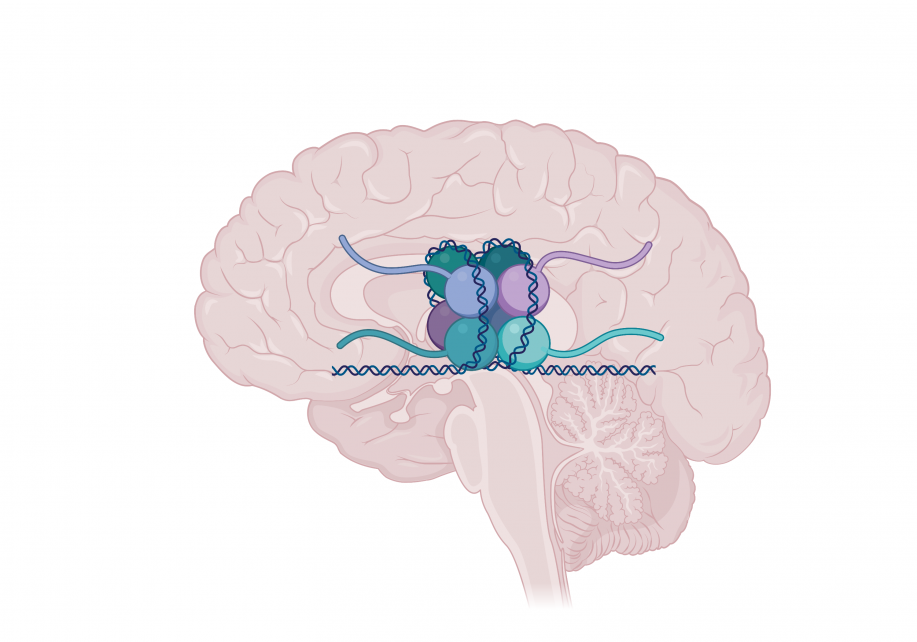Neurodevelopment has epigenetics on the brain
The brain is a remarkable organ and one of the most complex to assemble. DNA methylation is one of the most well-studied epigenetic mechanisms in neurodevelopment. Based on current scientific understanding, DNA methylation is a significant epigenetic mediator of cell type differentiation, with ample evidence supporting its role in regulating neural gene expression patterns.
The brain is a remarkable organ and one of the most complex to assemble. The development of the nervous system involves carefully timed epigenetic mechanisms that play a crucial role in regulating the timing and execution of gene expression programs that determine neural cell type, establish neural network connections and mediate how the system responds and adapts to environmental cues.
DNA methylation is one of the most well-studied epigenetic mechanisms in neurodevelopment. Based on current scientific understanding, DNA methylation is a significant epigenetic mediator of cell differentiation, with ample evidence supporting its role in regulating neural gene expression patterns.
Why Study the Neural Epigenome?
In the last decades, the neural epigenome has been the subject of major interest for understanding how neurodevelopmental, neurodegenerative and mental disorders arise and progress. Epigenetic modifications give precise assembly instructions that need to be rigorously followed. An increasing amount of evidence recognizes epigenetic signatures of neurological diseases, although whether they are causative, or a consequence of disease, is not always clear. Nevertheless, seeing as epigenetic modifications orchestrate the flow of genetic information from DNA to RNA to functional proteins, they have great potential for being early biomarkers for neurological diseases, and new drug targets that could expedite disease diagnosis and facilitate the development of novel routes of treatment.
Neurodevelopment
Around the third week of pregnancy, a portion of the ectoderm (the most exterior tissue layer of the embryo) is directed to form the anatomical structure called the neural tube that will eventually develop into the entire central nervous system (CNS), which includes the brain and spinal cord. The neural tube is populated by neural stem cells that have the ability to differentiate into neurons as well as glial cells, which support and protect neurons.
Neural stem cells first produce neurons that migrate and populate the different layers of the cerebral cortex. Later on, a neuronal-glial switch triggers the production of the protective glial cells, a process called gliogenesis. Neuronal-glial differentiation is a sophisticated multistep process that relies on dynamic epigenetic mechanisms that control where and when genes need to be expressed to produce the different cell types of the CNS.
Neural Gene Expression Control by DNA Methylation
An important aspect of neuron and glial formation is the coordinated activation and repression of neuron-specific and glial-specific genes at the correct time and place. Neuron- and glial-specific genes are a collection of genes such as transcription factors that initiate gene expression patterns during differentiation. Their promoters regulate gene activity via DNA methylation. When methylated, the gene is turned “off” and when unmethylated, the gene is turned “on”.
Once the production of neurons is well under way, glial cells begin to form. When reaching this neuronal-glial switch, neuron-specific promoters must be remethylated to silence neuron-specific gene expression, and glial-specific gene promoters must be demethylated to allow glial expression programs to be turned on.
Although many other molecular signals contribute to neurodevelopmental gene expression regulation, we know that DNA methylation mechanisms are crucial for proper neurodevelopment. Disruptions to DNA methylation have been directly linked to neurodevelopmental disorders and are rapidly becoming important biomarkers for disease.
Learn more
Epigenetic regulation of neural gene expression and neuronal function
Timing is everything: making neurons versus glia in the developing cortex

